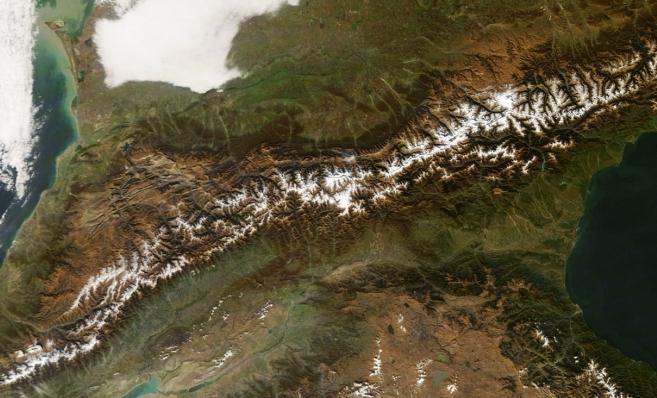At the junction of Europe and Asia, a majestic mountain range stretched for 1100 km formed by the massifs and ridges of the Greater Caucasus. Passing through the territory of Russia, Armenia, Georgia and Azerbaijan, this system begins off the Black Sea coast in the resort city of Anapa and ends on the Absheron peninsula of the Caspian Sea (territory of the Republic of Azerbaijan). On the axial part of the Greater Caucasus runs the Main Caucasian Range (GKH), which is also called the Dividing Range, because it serves as a conditional topographic line dividing the Inguri, Rioni, Kura river basins in its southern part and in the northern part of the Kuban, Terek, Sulak, Samur.

The westernmost point of the GKH and the entire Caucasus is the famous Fisht Mountain with a height of 2867 m - the highest of the three peaks of the Fisht-Oshten massif, formed by Fisht together with Oshten, Przheho-Su. Their distinguishing feature is their geographical location. These are the first mountains in the Caucasus (from west to east) with alpine-type peaks that go up significantly higher than the forest’s extreme border with characteristic zones of alpine and subalpine meadows.
Administratively, Fisht Mountain is located on the territory of the Republic of Adygea. Its name in translation from the local dialect sounds like "White Head". This is due to the presence of glaciers on its slopes. Due to this feature and significant elevation above sea level, Fisht Mountain with its snow-white peak is visible far beyond Adygea. Residents and guests of several cities of the Krasnodar Territory, such as Sochi, Armavir, Krasnodar, Timashevsk, can admire its beauty from afar.
In the place where the Fisht glaciers melt , three mountain rivers begin: Pshekha and Belaya, which are left tributaries of the river. Kuban, and Shah, flowing into the Black Sea.
Climatic conditions in the area of this mountain are not distinguished by mild disposition and stability. On the contrary, these places are characterized by sharp changes in temperature and changes in the direction and speed of the wind. During the off-season, heavy snowstorms and heavy snowfalls are possible here, so climbing to Fisht is usually planned for July-September, and ski tours for February-April. The relatively gentle slopes of the Lagonaki Highlands and the presence of a forest zone minimize the avalanche danger in the area and facilitate hiking in the mountains for tourists, which is carried out along the classical route 1B and does not require special skills and the use of complex equipment.
Mount Fisht is an incubator for over 120 species of endemic plants. Those. the only place on earth where these representatives of the plant world grow. Therefore, Fisht, like other Lago-Naki mountains, which have a unique composition of flora and fauna, is part of the Caucasus State Nature Reserve and has the status of a specially protected natural monument included in the UNESCO World Heritage List. Here are rare endangered species of animals that live exclusively in these places. 25 of them are listed in the Red Book of the Russian Federation, and 8 species are listed in the Red Book of the International Union for Conservation of Nature.